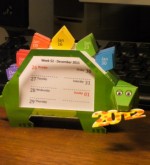It so happens that my Panasonic GH-1 is capable of spitting out so-called AVCHD files (with the extension .MTS). AVCHD is supposedly superior to older video encoding formats, but a lot of old software (such as Adobe Premiere Elements 3) cannot process it.
Being a strong proponent of not touching a working system, and seeing that Premiere Elements 3 still works quite well for me (except for, ahem, AVCHD import), I looked for inexpensive ways to convert such files to MPEG-2. And, lo and behold, I was successful:
There is a freeware that does the trick quite neatly, the aptly called Free-HD-Converter. Now, be careful: This piece of software is indeed free, but during installation it tries to install rather spammy looking browser toolbars. I unchecked these options (one cunningly starts with ‘accept terms and conditions’ … of the toolbar, that is).
If you avoid these toolbars, everything else seems rather fine. The user interface is very straightforward, there are several options with regard to the output format, and that’s about it. Conversion is taking some time, on my (admittedly rather old) system, the conversion frame rate is about 3 fps, which means that one minute of video takes about 10 minutes to convert.






